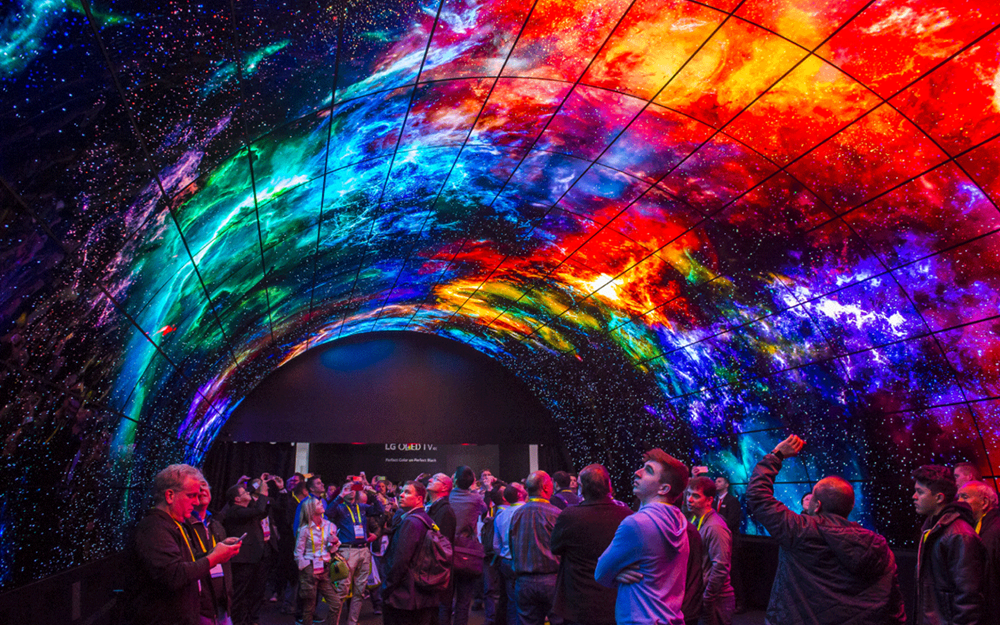Like traditional electronic products, LED large screens require careful operation and maintenance to ensure their lifespan. One of the reasons for issues arising during the use of LED large screens is improper usage habits. Below are twelve key methods for maintaining LED large screens.
Storage Temperature Requirements:
The environment temperature should be between -40℃ and 60℃. After unpacking, LED products should be stored in an environment with a temperature below 30℃ and humidity below 60%.
Maintain Humidity Levels:
Keep the humidity in the environment where the LED large screen is used stable. Avoid allowing any moisture-laden items to come into contact with your full-color LED screen. Powering on a full-color LED display in a high-humidity environment can corrode components, leading to permanent damage. Therefore, it is essential to check if the LED screen has absorbed moisture.
Pest Control:
Depending on the environment of the screen and control components, it may be necessary to use rodent repellent to prevent damage to the equipment.
Stable Power Supply:
Ensure that the power supply is stable and well-grounded. Avoid using the screen in harsh environments, especially in areas prone to thunderstorms.
Avoid Long Periods of Shutdown:
In high-humidity environments, if the screen has not been used for more than 3 days, it should be preheated before turning on: set brightness to 30%-50% and preheat for 4-8 hours before adjusting to normal brightness (80%-100%). If the screen has not been used for more than 7 days, preheat for at least 12 hours before adjusting to normal brightness. This helps eliminate moisture and prevents abnormal usage.
Dust Management:
In environments with lower protection levels, especially for outdoor full-color LED displays, dust can enter the device through ventilation openings, causing increased wear and even damaging components like fans. Dust can settle on internal control devices, reducing thermal and insulation performance. In humid weather, dust absorbs moisture from the air, leading to short circuits. Long-term dust accumulation can cause circuit boards and electronic components to mold, resulting in performance degradation and equipment failure. Therefore, cleaning the LED display is a crucial maintenance step. The surface of the LED display can be wiped with alcohol or dusted with a brush or duster, but do not use a wet cloth directly. If cleaning the module surface, use a soft brush gently. Avoid using any liquid substances to clean the LED module surface, as this may damage the LED bulbs; when wiping the screen, do so as gently as possible to minimize the risk of damage.
Avoid Conductive Materials:
Don’t place water, iron powder, or other conductive metals inside the screen. The LED display should be kept in a low-dust environment, as excessive dust can affect display quality and damage circuits. If water enters for any reason, immediately cut off the power and contact maintenance personnel; do not use the screen until the internal panel is dry.
Power On/Off Sequence:
A: Turn on the control computer and ensure it is running normally, then turn on the LED display. B: Turn off the screen, then turn off the control computer.
Avoid Full Brightness for Extended Periods:
Don’t keep the screen in a fully lit state (all white, all red, all green, all blue) for long periods, as this can cause excessive current in the power line, overheating, and damaging the LED bulbs, thus affecting the lifespan of the screen. Do not disassemble or splice the screen arbitrarily.
Daily Rest Recommendations:
It is recommended that the LED display rests for more than 2 hours each day. During the rainy season, the screen should be turned on at least once a week, and generally at least once a month for no less than 2 hours.
Regular Inspections:
Periodically check if the LED display is functioning normally and if the circuits are damaged. If it is not functioning properly, replace it promptly. If the circuit is damaged, repair or replace it in a timely manner. Place the main control computer and related equipment in a dust-free, air-conditioned room to maintain ventilation and stable operation. Non-professionals are prohibited from touching the internal circuits of the LED display to avoid electric shock or circuit damage. If there are issues, please have a professional inspect and repair.
Tightening Connections:
LED displays consume a lot of power, and after running for a period, repeated on/off cycles can cause the power terminals to loosen due to thermal expansion. Loose terminals can lead to poor connections and even ignite nearby plastic components. Signal terminals can also loosen due to temperature changes and humidity erosion, causing poor contact and equipment failure. Therefore, it is necessary to regularly tighten the connectors of the LED display, ensuring that adjustments are balanced and applied with appropriate force to maintain their effectiveness.
Post time: Oct-11-2024

